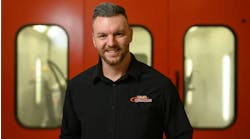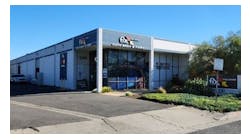Many people that work in a body shop describe their days as stressful or busy. But unfortunately, most of these people don’t realize they are doing it to themselves.
So much stress in our business is brought upon us by our own actions, or lack thereof.
Planning is something that most shops don’t do well. Our morning meetings are useless, for the most part. We don’t always do a good job of prioritizing our employees. A morning meeting on the vehicles should share valuable information and identify what work still needs to be done.
Are the parts ordered correctly, and when do we expect them? Have we spoken to the customer? Does the technician have everything they need? Prioritizing the staff should go hand-in-hand with our production meetings.
Prioritizing is often overlooked because people aren’t in yet, or because the technicians are paid on a flat rate so they “work for themselves.” And, on other occasions, we simply feel too busy.
We must prioritize our office employees, and detail which tasks we need them to tackle. For example, call Ms. Smith first thing, follow up on the parts for the car second, write the repair order third, and make sure paperwork is ready for the car that’s being picked up this evening last.
With technicians, we need to clarify to them what we need them to disassemble completely, in what order we want the repairs on vehicles completed, and when we want our reassembles done. We should also use this time to find out what they need to do their jobs.
Technicians are machines that print money. They need parts and paperwork to succeed, yet often we spend so little time prioritizing with them and setting them up for success.
Processes are often not well thought out. And, if we do have a process, often we do not follow it. A good process can help maintain shop organization, hold people accountable, and help run the shop without you involved in every step. A process for checking in customers and getting cars disassembled can help eliminate issues down the line. A car that’s checked in properly, disassembled properly, and blueprinted properly should create a smooth repair process.
A process for moving vehicles from phase to phase can help improve quality and create consistency in the product that we deliver. For example, a cool down bay for your painted vehicles can identify color issues, and anything that needs to be buffed before it goes into reassembly. How many times have we had five cars that were assembled but we couldn’t deliver because they all had to be buffed? If we run the vehicles through a cool down bay, then we can catch the buffing before it moves on further down the line. This will help to make sure that every car has a quality paint job.
Cars that are painted but cannot be delivered do us no good. It would be like inviting someone over for dinner then not cooking the chicken all the way. Sure the chicken is there, but we cannot eat it. Sure, the car is painted, but we cannot deliver it.
Expectations should be set with employees regarding their hours, dress code, and how their stalls and desks should look. Lay out what you expect from technicians in terms of quality, and what quality you expect from our office staff. I once had a technician tell me if he screwed up every job he worked on we would fire him, but if an estimator screws up every car he touches then we would let him handle a major account. Think about that for a second. That really hit home with me.
Our office staff should know we expect cars written a certain way, our customers updated a certain way and with a certain frequency. Our technicians should know that we expect a very high level of quality—and, that poor quality is inexcusable. They should know we don’t like parts in cars, and that we expect their stalls to be cleaned, their hoses to be rolled up before they go home, and for them to close their own doors when they leave.
Anything that’s important to you should be communicated with your employees so it becomes important to them.
Too many times in this industry we let the shops run us. It makes the workplace stressful, lowers morale, lowers customer service, and stops everyone from being successful.
Planning our days and prioritizing each employee’s tasks makes for a productive day. We need solid processes that help keep things in line, create a high level of organization, promotes good practice, and moves the product from phase to phase. Expectations with our customers let them know what’s going to happen while the car is with us and helps take the guessing and assumptions out of it.
Expectations with our employees give them a sense of purpose. If we don’t know what we’re going to get out of them because we haven’t set expectations, then that means they don’t know what they are going to get out of us, as shop leaders, either.


